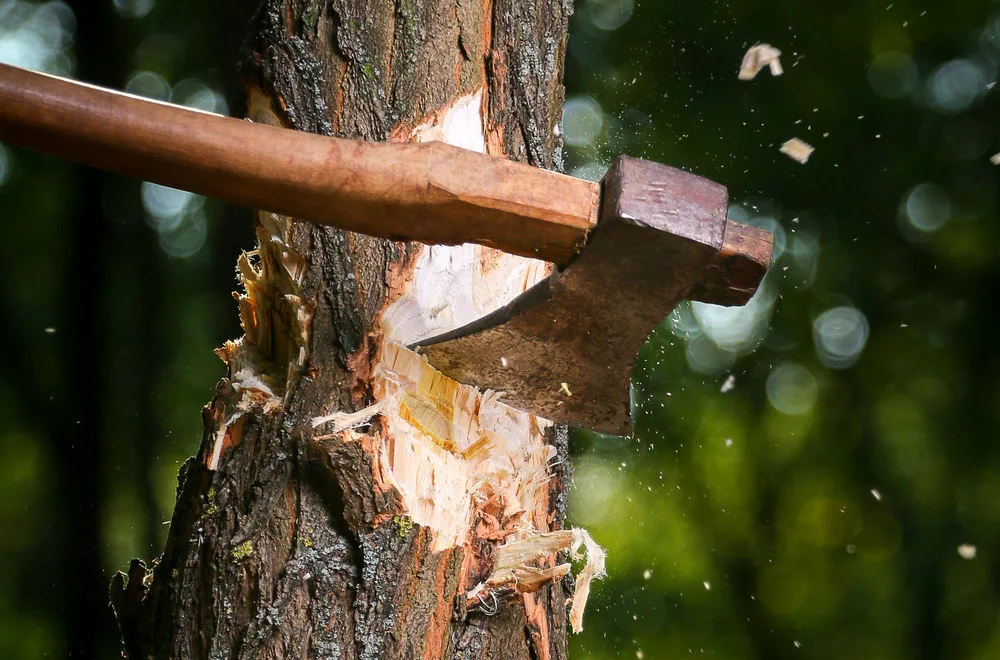Any axe is a good axe to the inexperienced, but any successful lumberjack will tell you this is far from the truth.
The two main axes are the splitting axe and the chopping axe.
So which of these best suits your application?
We need to engage in the splitting vs. chopping axe details to understand which of the two you need for the job.
What is a Splitting Axe?

A Splitting Axe.
As its name implies, this is the ax you require for wood-splitting applications.
Say, for instance, you have a piece of log you’d like to break down into fine bits (along the grains). Then, the ideal tool for this task would be the splitting axe.
Also, if you are an experienced lumberjack, you’ll note that no axe splits wood better and easier than the splitting axe.
It cuts wood easily along its grains thanks to its sharp edge and relatively heavy and thick head.
The heavy head helps to push the axe deep into the wood, thus enabling fast splitting.
What is a Chopping Axe?

A Chopping axe.
Again like the splitting axe, the name of the chopping axe suggests that it is specifically helpful for chopping wood.
The key feature of the tool is that it has a sharper blade than the splitting axe.
It enables it to cut across the wood grains without getting stuck. Again, the chopping axe’s head is thinner than the average splitting axe.
In addition to chopping down trees, the axe is essential in processing a tree (cutting down wood into small round logs).
Its sharp edge also makes it ideal for limbing branches off a tree, although a limbing axe is a better fit for this task.
Lastly, we commonly use the name ‘felling axe’ to refer to the chopping axe. It is because the chopping axe’s primary application is to fell trees.
Differences Between Split and Chop Axe

A Man with an Axe.
| Split Axe | Chop Axe |
| It has a thick cheek and a sharp cutting edge to break wood along its fibers. | It has relatively thinner cheeks but still features a sharp edge. The design is handy in ensuring it cuts wood efficiently along the grains without affecting the grain integrity. |
| Also, its blade is relatively short compared to the chopping axe. | Conversely, it has a long edge, ensuring that it digs pretty deep into the wood every time you swing it. |
| A splitting axe is an ideal tool for breaking down wood longs into firewood for use in your wood stove. | It is the best axe for felling trees (chopping them down). |
Split and Chop Axe Similarities

A Lumberjack.
While the axes differ in the aspects we’ve mentioned, they also share some similarities.
- Both feature a sharp edge even though the cutting area is blunter than the chopping axe for the splitting ax.
- Both rely on the user’s kinetic energy to cut wood, so they feature straight handles.
- You may also find split and chop axes with similar weights, although the split axe is relatively heavier to deliver a strong torque while splitting.
- Lastly, all are axes, so they are similar in all respects apart from the modifications on their heads.
Conclusion
This guide will be a reliable partner as you choose the best axe for split and wood-chopping applications. We also cover other axe types, so if you have additional queries, feel free to reach out at any moment, and we’ll respond promptly.
